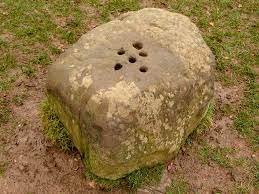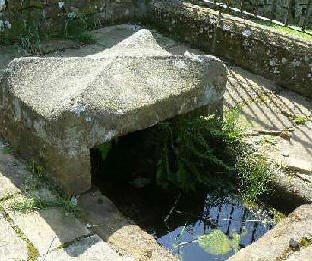Eyam: the real plague village which inspired Year of Wonders
Whilst hiking in the Derbyshire Peak District, author Geraldine Brooks stumbled upon a signpost to Eyam: the “Plague Village”. The story of what happened in this village in 1665 took hold of her imagination, inspiring her novel, Year of Wonders. At this time, Eyam was a remote village; a small closely knit community of lead miners and shepherds, cobblers and weavers. Bubonic Plague came to Eyam in a bale of cloth sent from London, where the disease had already killed thousands of inhabitants. Contained in the bale of damp cloth were fleas carrying the plague. A tailor's assistant opened the bale and hung the cloth in front of the hearth to dry, unwittingly stirring the disease-ridden fleas. He was the first person to die of the plague in Eyam.
Eyam is a pretty village in Derbyshire
Bubonic Plague intermittently reared its head in Europe between the 13th and 17th Centuries, killing an estimated 150 million people. The last major outbreak in England, the epidemic of 1664 to 1666 was particularly notorious. One hundred thousand people, one quarter of the city’s population, died in London alone. The plague is also known as Black Death, because sores of infected victims often form black scabs. Most cases are spread by fleas which have bitten infected rats, but this was not known at the time. Victims realised they had been struck by the plague when they began to smell sweet odours, a sign their olfactory glands had detected their internal organs were collapsing and rotting.
Green plaques tell the stories of the cottages struck by plague
Plague swept through Eyam and by the spring of 1666, many villagers were ready to flee elsewhere in order to save themselves. The newly appointed rector, William Mompesson, believed it was his God-given duty to prevent the plague spreading to nearby towns and he set about persuading his parishioners that they should voluntarily quarantine themselves, cutting themselves off from the outside world, with nobody allowed in or out. The Earl of Devonshire, who lived nearby at Chatsworth, offered to send food and supplies and the surviving villagers reluctantly agreed to the plan.
St Lawrence Church, where William Mompesson was rector
The villagers established a system of boundary stones around Eyam, boring holes into the rocks and leaving coins soaked in vinegar, believed to be a disinfectant, in the holes. Merchants from surrounding villages would collect the money and leave bundles of meat, grains and other supplies in return. You can still visit the boundary stones around the periphery of the village today.
A boundary stone
After fourteen months, the disease burned itself out, leaving almost as suddenly as it had arrived, and life returned to normal. 267 people died in Eyam, out of a population of just 344. Strangely perhaps, given his high level of exposure to infected individuals, the gravedigger was not killed.
Today you can learn more of the plague years at Eyam Museum and walk through the beautiful main street where green plaques mark cottages the plague struck, many listing numerous family members.
The cottage where it all began
The Plague Window in St Lawrence Church depicts elements of Eyam’s tragic brush with the Black Death, including Mompesson's well where food was left for the villagers, the Riley graves where Elizabeth Hancock buried her husband and six children, and a 'ring o' roses' – as in the nursery rhyme referencing the rosy rash developed by plague victims and posies of herbs carried as protection and to ward off the smell of the disease. On the edge of the village, it is possible to walk to the Riley Graves, Mompesson's Well, where supplies were left for the villagers, and the Boundary Stones.
Window depicting elements of Eyam’s plague story
Mompesson’s Well outside the village
Each year on the last Sunday of August the village pays tribute to the brave villagers who stayed in Eyam risking death rather than fleeing and potentially spreading disease to surrounding communities.
Other book inspired by Eyam’s plague history are Children of Winter by Berlie Doherty, a time-slip novel for children and A Parcel of Patterns, a Young Adult novel by Jill Paton Walsh.
These three novels are made-up stories rooted in the real past, reimagining real lives, and honouring the villagers of Eyam, who sacrificed so much to help others.






